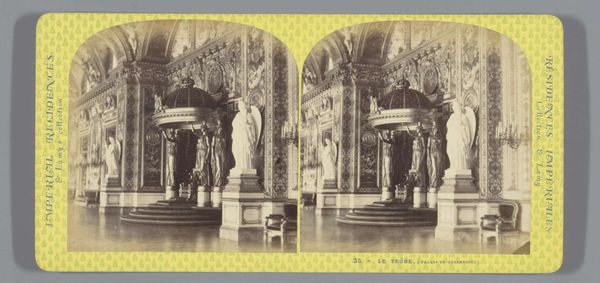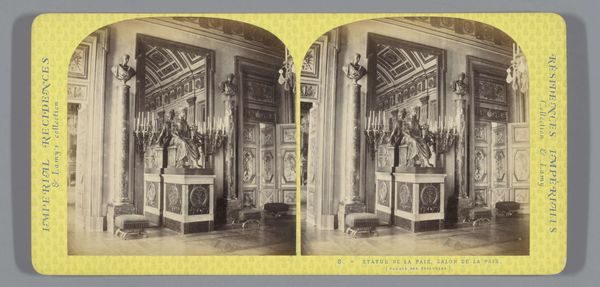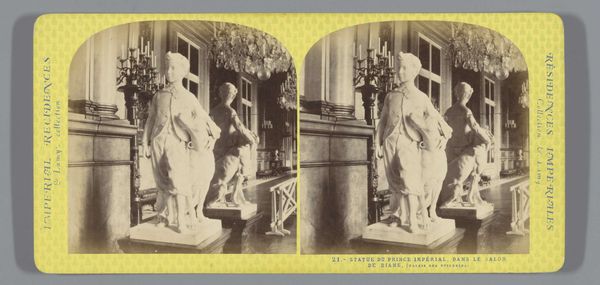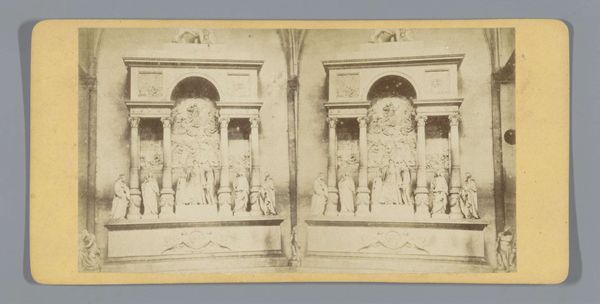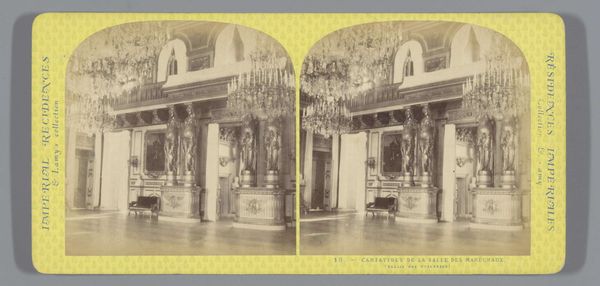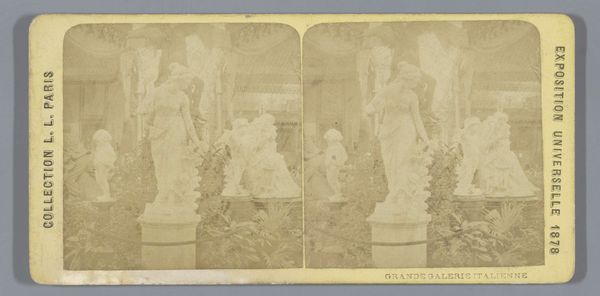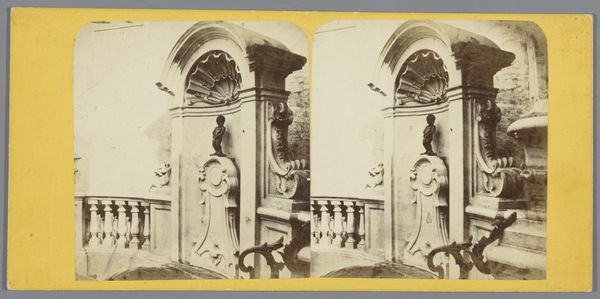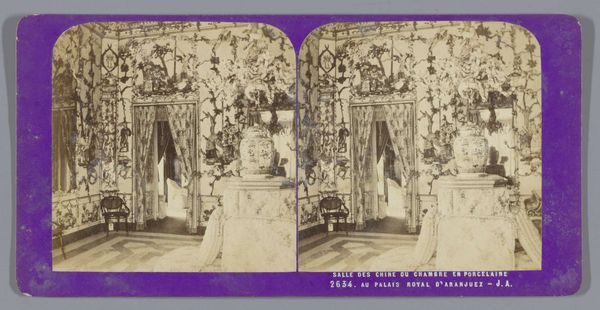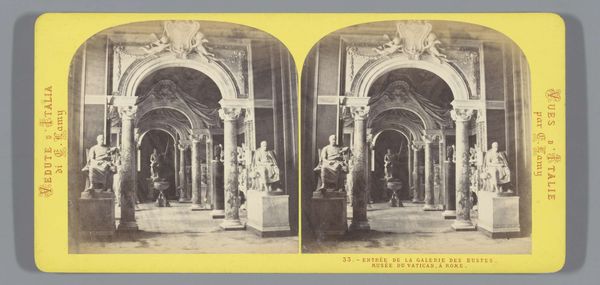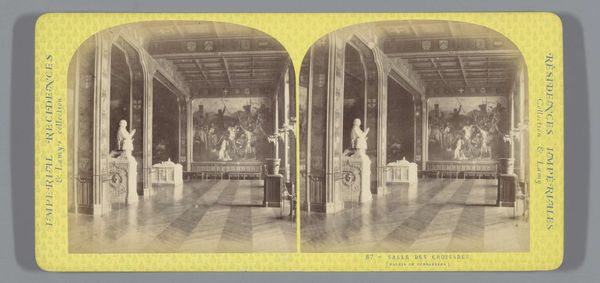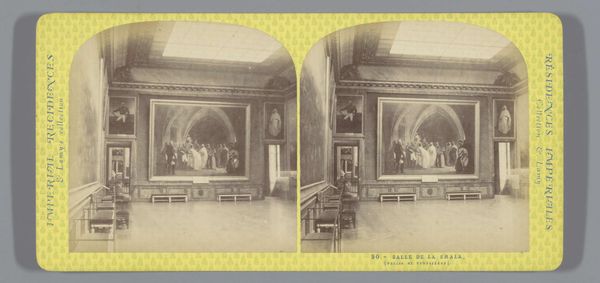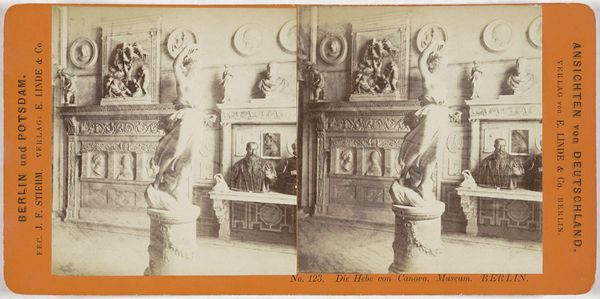
Sculptuur van Philippe Villiers de l'Isle Adam in het paleis van Versailles c. 1860 - 1880
0:00
0:00
photography, sculpture
#
portrait
#
photography
#
sculpture
#
academic-art
Dimensions: height 85 mm, width 170 mm
Copyright: Rijks Museum: Open Domain
Curator: Here we have a stereoscopic photograph dating from between 1860 and 1880, showcasing a sculpture of Philippe Villiers de l'Isle Adam, placed in the Palace of Versailles. The photograph is credited to Ernest Eléonor Pierre Lamy. Editor: It feels very much like a ghost captured in a box. The monochromatic tones emphasize a haunting stillness. The figure is bathed in this soft light, creating a real sense of otherworldliness and memory. Curator: The way it frames sculpture within a designed space is quite telling. It gives prominence not only to the subject depicted, Villiers de l’Isle Adam, but the material conditions of representation—the sculptural production, photographic processes, even its eventual display as part of the "Imperial Residences" collection. Editor: Absolutely. Look at how the architectural background resonates with this feeling, like echoes of crusades; these painted medieval heraldries. The statue holds some papers. Are they important decrees, a declaration? They add another layer, suggesting responsibility and influence. Curator: These historical layers compound the representation. It's about documenting an object *within* its constructed context. The marble sculpture itself would have taken considerable artisan labour; here, photographed and mass-produced for dissemination as an accessible consumer product for bourgeois interiors. Editor: The act of photographic duplication and distribution does create an intriguing paradox. The man represented led forces and gave orders... but look closer and he's more introspective than domineering. He seems burdened by reflection. Curator: So while a marble statue commands respect, photography democratizes the image—transforming it from aristocratic possession into readily available documentation. The interplay between "high" art sculpture and its recontextualization highlights photography's levelling capability. Editor: The overall impression becomes less about individual authority and more about the weight of legacy, both intended and perceived, transformed into an object that is easily circulated and seen again, many years later. Curator: Indeed, observing these material processes helps reveal the shifting meanings embedded within art objects—a shift underscored when considering its depiction as an object itself. Editor: Examining how it operates in and through cultural symbolism to show its resonance, both intended and interpreted, is powerful.
Comments
No comments
Be the first to comment and join the conversation on the ultimate creative platform.
